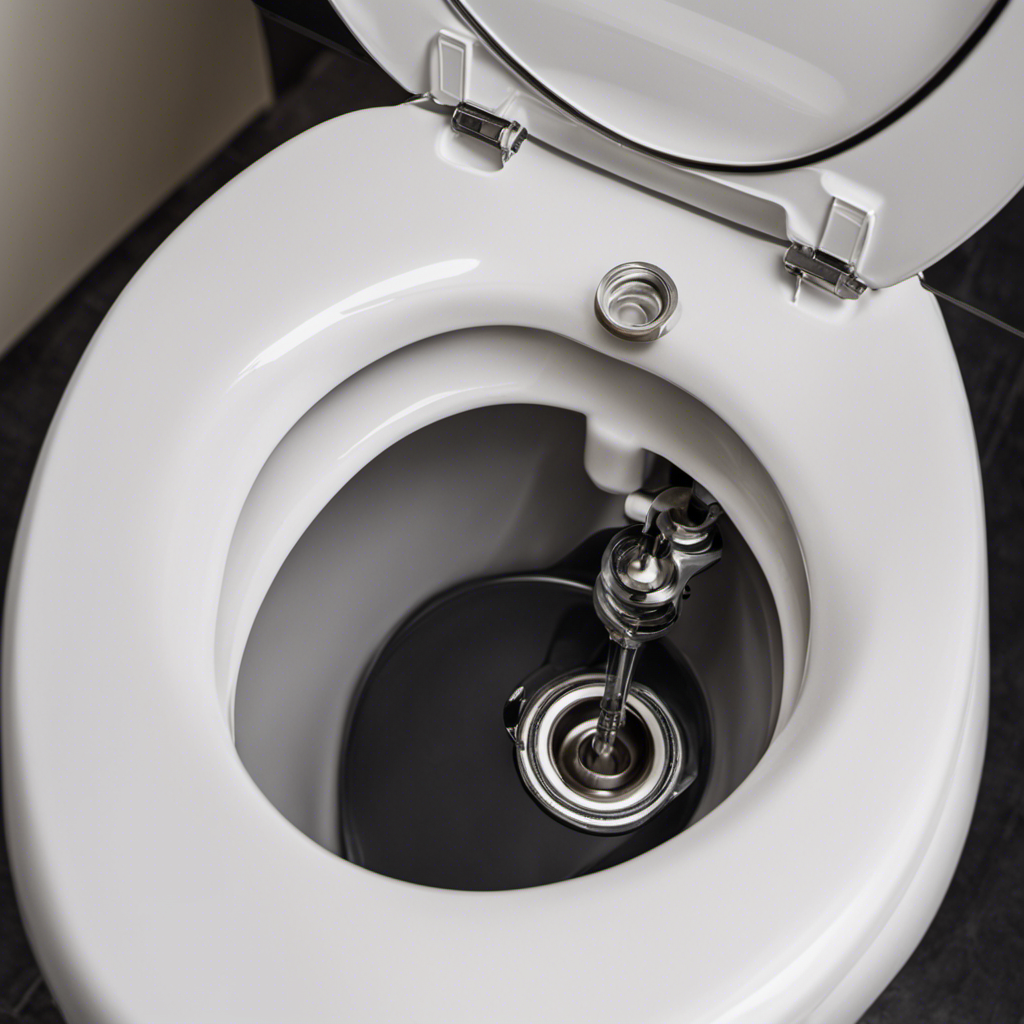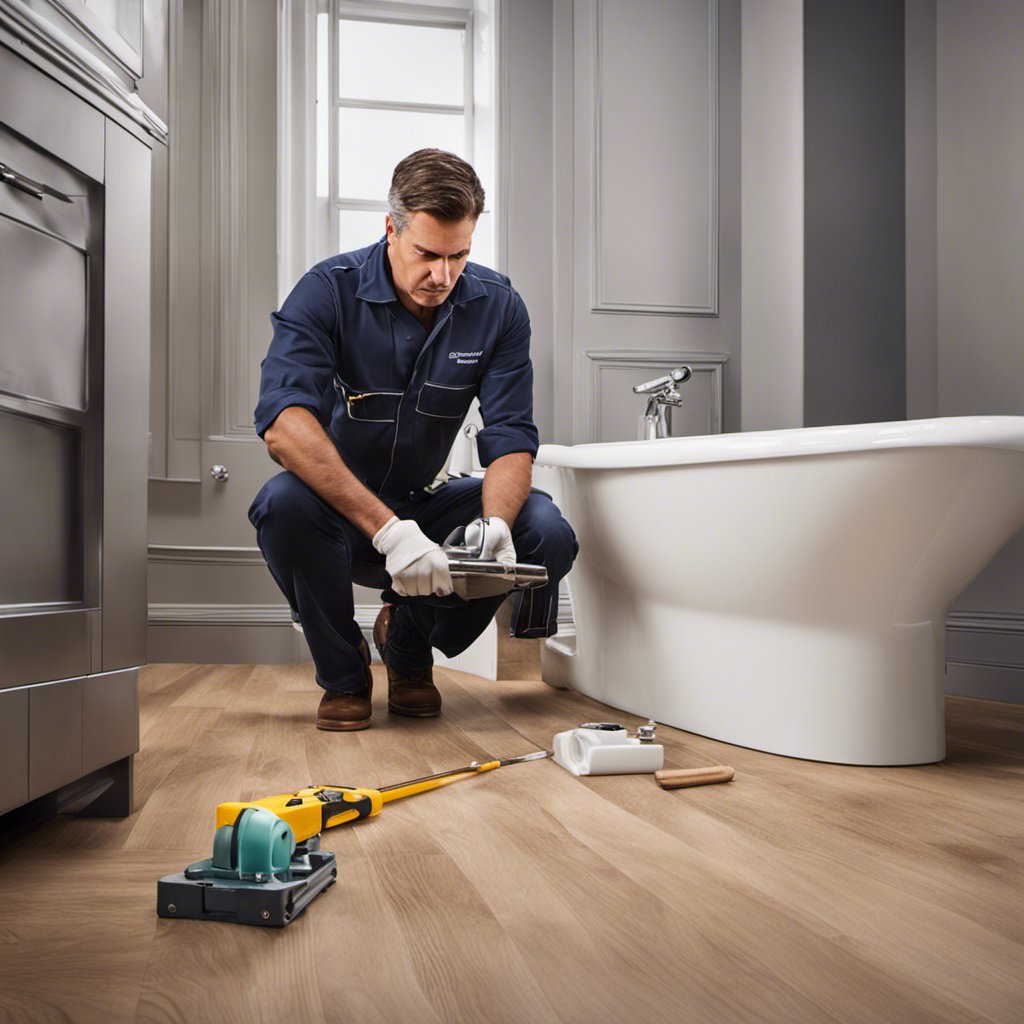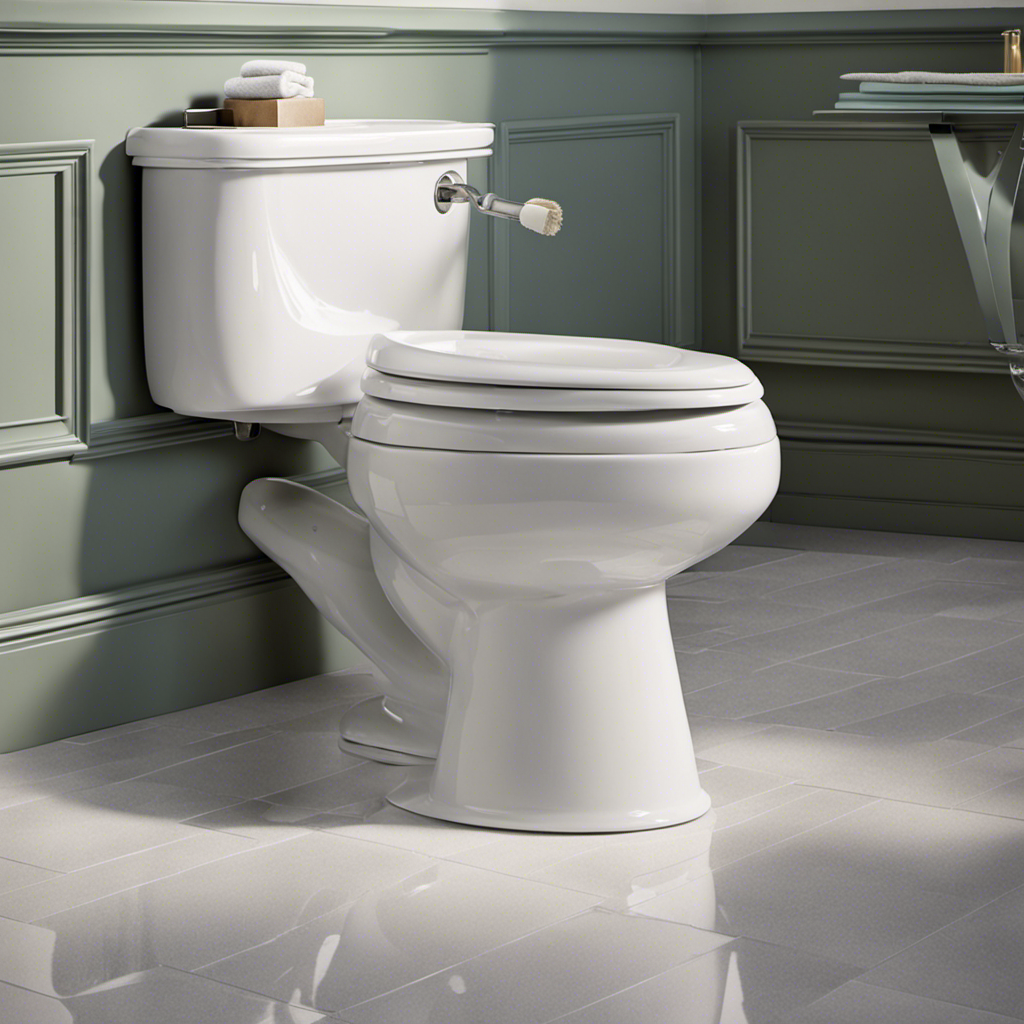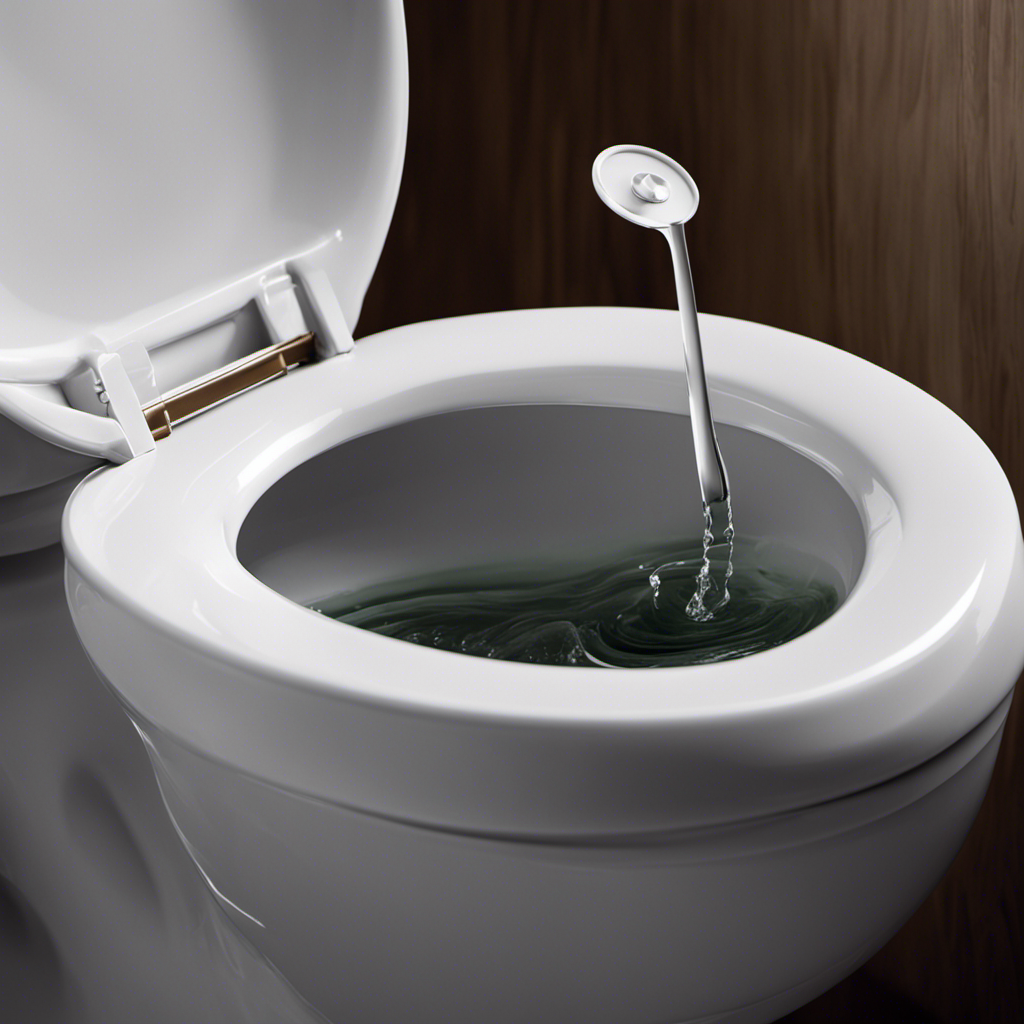A wobbly toilet is not only annoying but can also lead to potential water leakage and damage. In order to ensure a stable and secure toilet, it is important to identify the causes and implement effective solutions.
This article will provide a comprehensive guide on how to fix a wobbly toilet, including common causes, step-by-step instructions for repairs, tips for using caulk to secure the toilet, and the process of replacing the toilet flange.
Additionally, maintenance tips will be provided to prevent future wobbling issues.
Key Takeaways
- Loose toilet bolts, improper installation, uneven flooring, damaged toilet flange, and shifting subfloor are common causes of a wobbly toilet.
- DIY solutions include tightening toilet bolts, using shims, checking for leaks, adjusting or replacing the wax ring, and leveling the toilet.
- Professional solutions may involve using toilet stabilizer products, consulting professional repair services, replacing the toilet flange, or repairing/replacing the subfloor.
- Using caulk can secure the toilet, prevent leaks, hide gaps, and provide a neater appearance, but it may be difficult to remove if the toilet needs replacement and can potentially lead to moisture accumulation and mold growth.
Common Causes of a Wobbly Toilet
One common cause of a wobbly toilet is loose toilet bolts. During bathroom renovation or toilet installation, it is important to ensure that the toilet bolts are securely tightened. If the bolts are loose, the toilet can become unstable and wobble when weight is applied.
This can be a nuisance and potentially lead to leaks or even damage to the flooring. To fix this issue, the bolts should be tightened using a wrench or pliers. It is important to not overtighten, as this can cause damage to the toilet or the flange.
Fixing a Wobbly Toilet
To stabilize a wobbly toilet, the homeowner should first tighten the bolts connecting the toilet base to the floor. This simple step can often solve the problem. However, if the wobbling persists, there are other options to consider.
Here are two sub-lists to help you address a wobbly toilet:
-
DIY Solutions:
- Check for leaks and fix them to prevent further damage.
- Identify any gaps between the toilet and the floor and fill them with shims for added stability.
-
Professional Solutions:
- Consider using toilet stabilizer products designed specifically to eliminate wobbling issues.
- If all else fails, it may be beneficial to call professional toilet repair services to assess and fix the problem.
Using Caulk to Secure the Toilet
Applying caulk to the base of the toilet helps secure it in place and prevents water leakages. Caulk is a popular choice for stabilizing a wobbly toilet because it creates a tight seal and provides added support. The pros of using caulk include its affordability, ease of application, and effectiveness in preventing leaks. Additionally, caulk provides a neat and finished appearance by hiding any gaps or imperfections between the toilet and the floor.
However, there are some cons to consider. Caulk can be difficult to remove if the toilet needs to be replaced, and it may also trap moisture, leading to mold or mildew growth.
Alternatives to using caulk for stabilizing a wobbly toilet include using shims or replacing the toilet flange. Shims can be adjusted to provide stability, while replacing the flange ensures a secure and long-lasting solution.
Replacing the Toilet Flange
Replacing the toilet flange involves several steps. First, you need to close the valve to stop the water supply. Next, remove the toilet bowl by unscrewing the bolts and lifting it off the flange. After that, you can remove the old flange by unscrewing it from the floor. Once the old flange is removed, you can install the new flange by aligning it with the floor drain and securing it with screws. To create a watertight seal, place a new wax ring on the flange. Finally, re-install the toilet bowl by aligning it with the flange and pressing it down firmly.
Final Steps for a Stable Toilet
After completing the steps for replacing the toilet flange, the next important steps involve ensuring that the base holes match the position of the mounting bolts and screwing the nuts that connect the bolts to the toilet base.
Proper toilet bowl alignment is crucial in preventing future wobbling issues. To align the base holes with the mounting bolts, carefully lower the toilet bowl onto the newly installed flange, making sure the bolts fit into the holes.
Once aligned, tighten the nuts onto the bolts using a wrench or pliers. It’s important not to over-tighten as this can cause cracking.
After securing the nuts, gently rock the toilet bowl back and forth to test for stability. If there is no wobbling, congratulations! You have successfully completed the final steps for a stable toilet.
Enjoy a sturdy and reliable fixture in your bathroom.
Maintenance Tips for a Wobble-Free Toilet
To ensure a stable and reliable toilet, regular inspection and tightening of bolts, as well as checking for any gaps or uneven flooring, will help prevent wobbling issues. Maintaining toilet stability is crucial to avoid potential accidents and water leaks.
Here are some essential maintenance tips to keep your toilet wobble-free:
- Regularly inspect and tighten the toilet bolts to ensure they are secure.
- Check for any gaps between the toilet and the floor and fill them to provide stability.
- Ensure the bathroom flooring is even and free from bumps that could cause the toilet to wobble.
- Consider using shims to level the toilet if necessary.
- Use caulk to secure the toilet base and prevent water leakages.
Frequently Asked Questions
Can a Wobbly Toilet Cause Any Damage to the Flooring or Surrounding Area?
A wobbly toilet can potentially cause damage to the flooring and surrounding areas. This can lead to safety hazards and costly repairs. It is important to address the issue promptly to prevent further damage.
Are There Any Temporary Solutions for a Wobbly Toilet Until It Can Be Permanently Fixed?
Temporary fixes for a wobbly toilet include using shims or leveling wedges to stabilize the base. These methods can provide temporary stability until the toilet can be permanently fixed by addressing the underlying causes.
Is It Necessary to Hire a Professional Plumber to Fix a Wobbly Toilet, or Can It Be Done as a DIY Project?
Fixing a wobbly toilet can be a DIY project for most people. Hiring a professional plumber may not be necessary unless the problem is complex or if the person lacks the tools or skills required.
How Long Does It Typically Take to Fix a Wobbly Toilet?
On average, fixing a wobbly toilet can take about 1-2 hours. Common causes include loose bolts, a broken flange, or uneven flooring. Identifying the issue and following the necessary steps will ensure a stable toilet.
Are There Any Warning Signs or Symptoms That Indicate a Toilet May Become Wobbly in the Future?
Warning signs of a wobbly toilet include a shifting base, rocking motion, and loose bolts. Preventive measures to avoid this issue involve regular maintenance, checking for leaks, and ensuring the toilet is properly secured to the floor.
Conclusion
In conclusion, maintaining a stable toilet is essential to prevent wobbling and potential damage. By identifying common causes such as loose bolts, broken flanges, or uneven flooring, one can easily fix the issue.
Applying caulk to secure the toilet and replacing the flange if necessary are additional steps to ensure stability. Regular maintenance, such as checking for leaks and tightening bolts, will help keep the toilet wobble-free.
Remember, a sturdy toilet not only prevents embarrassing mishaps but also adds a touch of sophistication to your bathroom. So, take the necessary steps to keep your porcelain throne steady and reliable!










